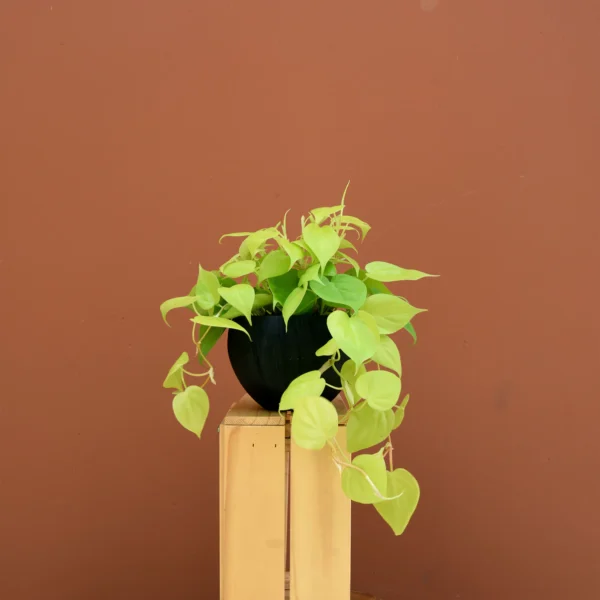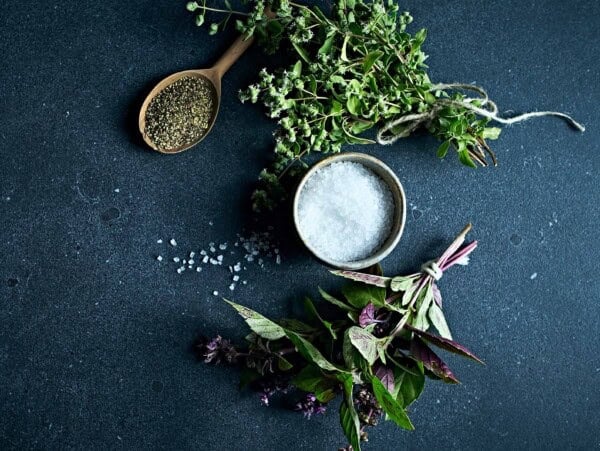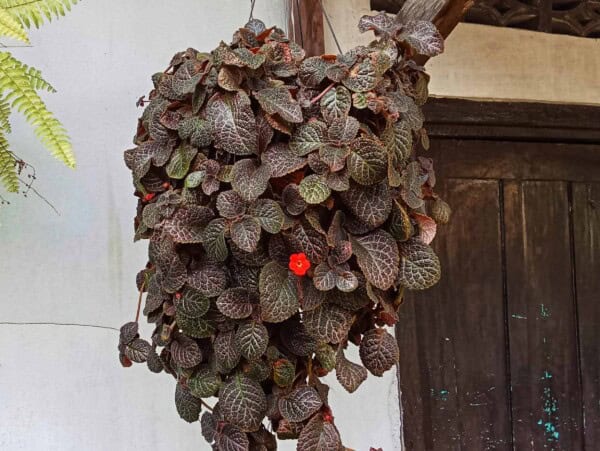Who doesn’t love a well placed plant? I know I do. If you’ve ever admired a home filled with vibrant, lush greenery, you’ve likely encountered the Wandering Jew plant. Known for its striking purple foliage and ease of care, the Tradescantia fluminensis.—has become a can’t miss addition to many indoor gardens and almost all of my interior designs. Whether you’re a seasoned plant enthusiast like me or a beginner looking to add some green to your space, this comprehensive guide will provide you with everything you need to know to keep your plant—often referred to as the Inch Plant or Jew Plant—thriving and looking its best.
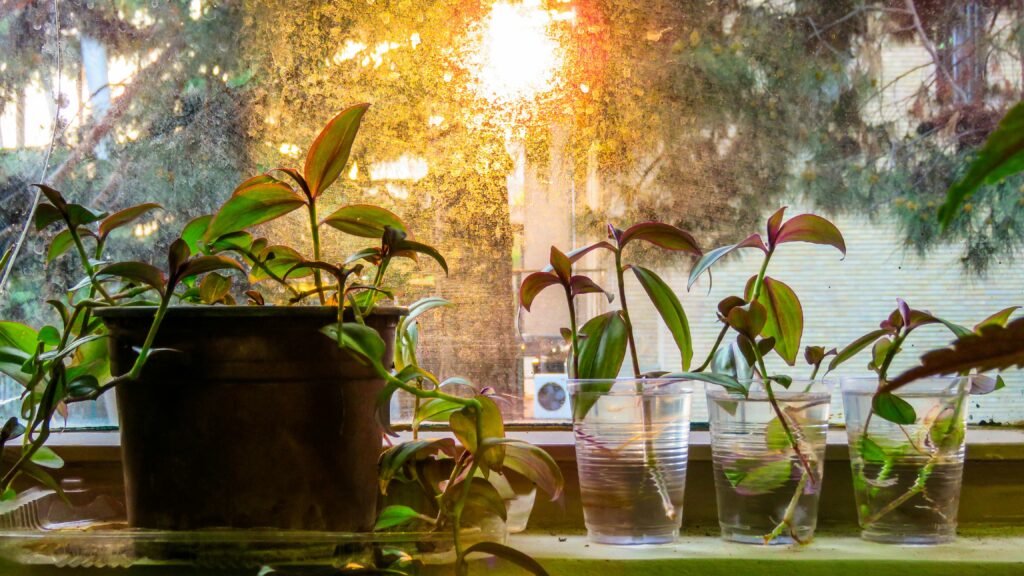
With over 15 years of experience helping plants thrive indoors, I’ve found that the these plants thrives in bright, indirect light and requires well-draining soil to prevent overwatering. Regular pruning is essential to maintain its lush appearance, and occasional misting helps to create the humid environment it loves. Additionally, I’ve successfully propagated hundreds of new plants from cuttings, expanding my collection and sharing the joy of caring for these beautiful specimens with friends and family
With a little bit of know-how and some expert advice from yours truly, I’ll help you explore the many facets of caring for these stunning plants.
Table of Contents
- A Quick Reference Guide
- What is a Wandering Jew Plant?
- Varieties to Consider
- Plant Care: Essential Tips
- What to Know When Propagating
- Stem Cuttings
- Replanting
- Humidity Management
- Adapting to Shorter Growing Seasons
- Temperature Management
- Benefits of Quick Release Fertilizer
- Pests
- Diseases
- What about Pets?
- Commonly Asked Questions
- Final Thoughts
A Quick Reference Guide

Here’s a snapshot of essential information to keep your beloved plant in top shape:
- Scientific Name: Tradescantia spp.
- Common Names: Wandering Jew, Wandering Dude, Inch Plant
- Family: Commelinaceae
- Plant Type: Houseplant
- Hardiness Zones: 9 – 11 (USDA)
- Sun Exposure: Bright, indirect sunlight
- Soil Type: Potting soil with organic matter
- Soil pH: Acidic (5.0 to 6.0)
- Height: Up to 14 inches
- Spacing: 10 to 14 inches
- Bloom Time: Summer
- Flower Colors: Purple, pink, white
What is a Wandering Jew Plant?

It’s simple, but picking the right soil can give your plant the boost it needs to help really brighten the area around it. Thankfully, they don’t require any these beauties have a striking member of the Tradescantia genus, renowned for its colorful and diverse foliage. Originating from South America, these plants are celebrated for their ability to add vibrant splashes of color to any indoor setting. My first encounter with the Wandering Jew plant was with the Tradescantia zebrina, known for its insanely cool zebra-like stripes of silver and green. The plant’s bold patterns and easy care quickly won me over, sparking a passion that led me to explore various varieties and care techniques.
Over the years, I’ve expanded my collection to include several varieties, each with its own distinctive charm. From the deep purple hues of Tradescantia pallida to the lush trailing vines of Tradescantia fluminensis, each plant has added its own special touch to my indoor garden.
Varieties to Consider

One of the joys of caring for these plants is exploring their different varieties. Each type has its own unique appeal and can add a distinct personality to your home. Here are a few of my favorites:
Tradescantia fluminensis: Known as the Green Wandering Jew, this variety is ideal for those who appreciate lush, trailing vines. I’ve used this variety as a ground cover in larger planters, where its cascading vines create a beautiful, green backdrop for other plants.
Tradescantia zebrina: Often called the Zebra Plant, this variety is known for its striking silver and green stripes. It’s a fantastic way to add a touch of elegance to any room, and I’ve found it to be particularly striking when placed in a hanging basket or on a high shelf where its trailing vines can cascade down.
Tradescantia pallida: Commonly known as the Purple Heart, this variety features deep purple leaves that create a dramatic effect. I remember setting up a small display of Tradescantia pallida on a shelf in my living room, and its rich color quickly became a conversation piece. It occasionally produces delicate purple flowers that add an extra touch of sophistication.
Plant Care: Essential Tips
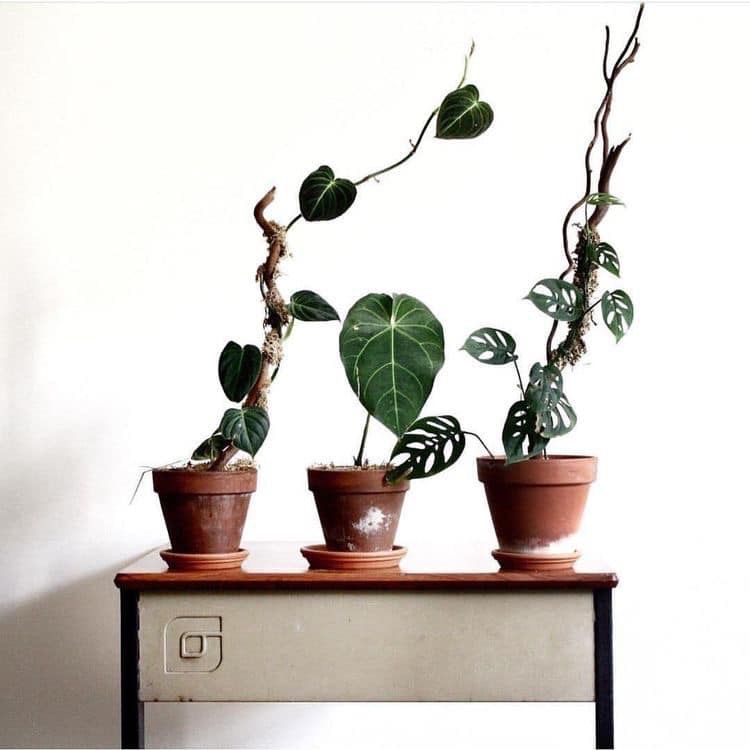
Caring for this plant plant involves a few key elements to ensure its vibrant health and growth. Based on years of experience, here are my top tips:
Light Requirements
Wandering Jew plants thrive in bright, indirect light. I’ve found that placing them near east or west-facing windows works best. Too much direct sunlight can scorch their delicate foliage, while too little light can cause the plant to become leggy. For optimal health, aim for a balance where your plant receives bright indirect sunlight, mimicking its native tropical habitat.
I once made the mistake of placing a Tradescantia zebrina directly in the sun, thinking it would enjoy the extra brightness. Instead, the leaves developed unsightly brown patches. Since then, I’ve always made sure to position my plants in spots where they receive filtered light, and they’ve thrived beautifully.
Watering
Proper watering is crucial for maintaining a healthy plant. I allow the top inch of soil to dry out before watering. Overwatering can lead to root rot, a common problem in moist soil conditions. During the winter months, when the plant’s growth slows down, I reduce watering accordingly. For propagating new cuttings, a glass of water is an easy way to start, but transitioning them to potting soil supports long-term health.
I’ve found that it’s better to under-water than over-water. A few years ago, I had a beautiful Tradescantia pallida that suffered from root rot due to overwatering. Since then, I’ve been meticulous about checking the soil moisture before adding water, and it’s made a huge difference in keeping my plants healthy.
Soil and Potting
For optimal growth, use a well-draining potting soil enriched with organic matter. Adding sand can improve drainage and prevent root rot. Make sure your container has drainage holes to avoid waterlogged soil. If you notice roots emerging from the bottom of the pot, it’s time to repot to prevent crowding and ensure adequate space for root growth.
I remember when I first started growing, I didn’t realize how crucial proper soil and potting were. I used a generic potting mix without considering drainage, and many of my plants struggled. Switching to a well-draining mix and using pots with drainage holes made a significant improvement in their health.
Temperature and Humidity
These plants prefer a warm, humid environment. Maintaining temperatures between 60°F and 75°F (15°C to 24°C) is ideal. Avoid placing the plant near cold drafts or heating vents. To combat dry indoor air, especially in winter, I mist the plant occasionally or use a humidity tray. This helps to maintain the high humidity levels.
In my home, I use a small humidifier near my plants during the winter months to keep the air moisture levels up. This simple addition has been invaluable in preventing the dry, crispy leaves that often result from the winter air.
Fertilizing
Feeding your plant with a balanced, water-soluble fertilizer every 4-6 weeks during the growing season keeps it healthy and vibrant. I’ve used both quick-release and liquid fertilizers, and both work well. For those who prefer organic options, incorporating compost or other organic matter into the soil is a good idea. Avoid over-fertilizing, as too much can lead to leaf burn or imbalance in the soil nutrients.
I once over-fertilized a Tradescantia fluminensis, thinking it would help it grow faster. Instead, the plant showed signs of leaf burn. Since then, I’ve adhered to the recommended dosage and schedule, which has kept my plants flourishing.
Common Problems and Solutions
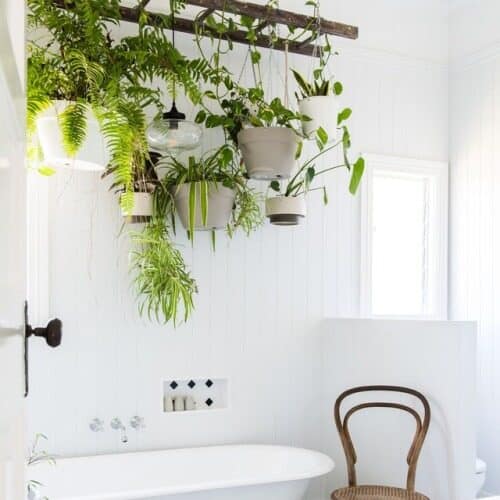
Even with the best care, you might encounter a few issues with your plant. Here’s how to tackle them:
Leaf Drop
If your plant is dropping leaves, it could be due to inconsistent watering or inadequate light. Ensure the soil moisture is balanced and adjust the light exposure as needed. Keeping the plant in a bright, indirect light spot and maintaining consistent watering will help address this common issue.
I remember a period when my Tradescantia zebrina experienced significant leaf drop. I realized that it was because I had moved it to a darker spot in the house. Once I relocated it to a brighter location and adjusted my watering routine, the plant recovered beautifully.
Pests
Common pests like spider mites, aphids, and mealybugs can affect your plants health. Spider mites, in particular, thrive in dry conditions. Regularly inspect your plant and treat infestations with insecticidal soap or neem oil. Fungus gnats are another issue, especially in overly moist soil. Using sticky traps and reducing watering can help manage these pests effectively.
Pests were a challenge for me when I first started growing these in my home. I found that keeping a close eye on the plants and addressing infestations early with neem oil made a huge difference in maintaining plant health.
Leggy Growth
Leggy growth often indicates that the plant isn’t getting enough light. To encourage fuller, bushier growth, increase light exposure and regularly prune the plant. This helps prevent the plant from becoming leggy and maintains its vibrant appearance. Pruning also helps with the growth habit, making yours bushy and compact.
I’ve learned that regular pruning is key to keeping your plants looking their best. A few snips here and there not only helps manage leggy growth but also promotes a fuller, more attractive plant.
Brown Leaves
Brown leaves can be a sign of overwatering or low humidity. Adjust your watering practices and increase humidity levels if needed. If powdery mildew appears, treat it with a fungicide to prevent further spread. Regularly check for signs of excess water or dry conditions to keep your plant healthy.
Brown leaves were a common issue for me early on, especially during the winter months. Increasing humidity and fine-tuning my watering routine has helped prevent this problem from recurring.
What to Know When Propagating
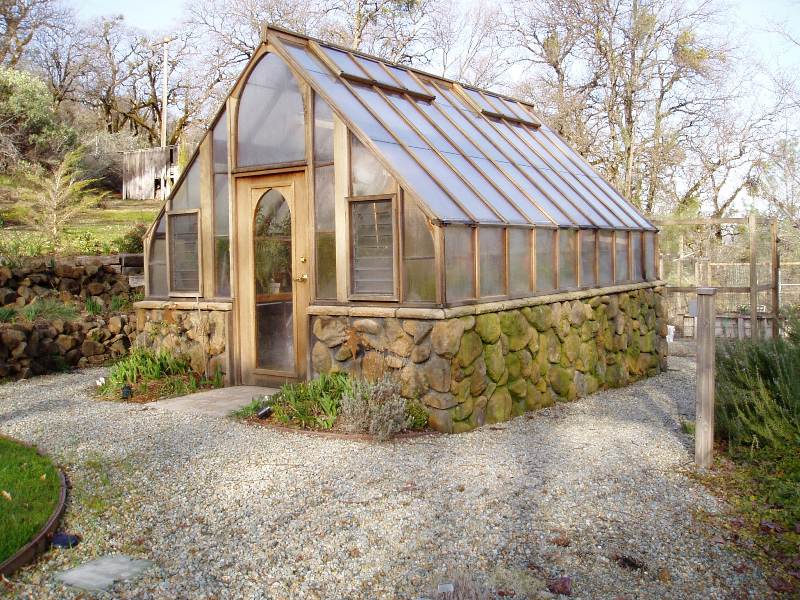
Propagation is one of the most enjoyable aspects of caring for Tradescantia Zebrina fluminensis plants. Here’s how to propagate them successfully:
Stem Cuttings
To propagate, take 4-6 inch cuttings from healthy stems. Remove the lower leaves and place the cuttings in water or directly in soil. I’ve had success with both methods, but transitioning cuttings from water to soil usually results in better long-term growth.
I remember propagating my first Tradescantia pallida. I placed the cuttings in water and watched as roots developed. Once I moved them to soil, they established quickly and grew into beautiful, vibrant plants.
Replanting
Once the cuttings have developed roots, transplant them into fresh potting soil. Water well and place them in bright, indirect light to help them adjust and thrive. This process is rewarding and allows you to expand your plant collection or share with friends and family.
I’ve enjoyed replanting cuttings and watching them flourish. It’s a gratifying experience to see new plants grow from cuttings and become healthy, thriving additions to my indoor garden.
Special Considerations Based on Variety

Different varieties have unique needs:
Purple Wandering Jew
This variety requires bright light to maintain its vibrant purple color. Without sufficient light, the plant’s color may fade. Ensure it receives plenty of indirect sunlight and maintain consistent care.
I’ve noticed that my Tradescantia pallida’s color intensifies when it gets ample light. Placing it near a bright window has kept its deep purple hue vivid and striking.
Nanouk
The Nanouk variety is slightly more sensitive and may require more frequent watering. However, it follows similar care guidelines to other Tradescantia Zebrina fluminensis plants. Monitor its soil moisture closely and provide adequate light to keep it healthy.
I’ve found that the Nanouk needs a bit more attention to watering, but it’s well worth it for its unique appearance and vibrant colors.
Winter Care
During the winter months, reduce watering as the plant’s growth slows. To keep your plant happy, increase humidity and provide consistent light. Adjusting care for the winter season helps the plant remain healthy and ready for the growing season.
In winter, I use a humidity tray and keep my plants in a well-lit area to help them stay healthy. This approach has been effective in preventing common winter-related issues.
Humidity Management

Maintaining the right humidity levels is crucial for the plant heath:
Grouping Plants
Grouping multiple plants together creates a microenvironment with higher humidity. I often place mine close to other humidity-loving plants, which helps create a more favorable environment for all of them.
Misting
Regular misting helps maintain humidity, especially in dry indoor environments. I mist my plants every few days, particularly during the winter months when indoor air tends to be drier.
Humidity Trays
Place a humidity tray with water and pebbles near your plant. As the water evaporates, it increases the humidity around the plant. This simple setup has been effective in boosting humidity levels in my indoor garden.
Adapting to Shorter Growing Seasons

For those in cooler climates, here are some tips for maximizing growth during shorter growing seasons:
Extended Light Exposure
Use grow lights to supplement natural light during shorter days. This helps ensure that your plant receives enough light for healthy growth.
Optimized Ferilization
Adjust your fertilization routine to match the plant’s slower growth rate during the winter. Reducing the frequency of feeding helps avoid over-fertilizing.
I’ve found that using grow lights during the winter months has been beneficial for my plants. It’s a great way to ensure they receive the light they need to stay healthy and vibrant.
Temperature Management

Protecting yours from extreme temperatures is essential:
Indoor Placement
Keep your plant indoors during colder months and place it near a south-facing window for optimal light exposure.
Heat Sources
Avoid placing the plant near heaters or radiators, which can dry out the air. Using a humidifier in these situations helps maintain a comfortable environment for your plant.
I’ve learned to be mindful of temperature changes and avoid placing my plants near heat sources. This practice has helped keep my plants healthy and thriving.
Benefits of Quick Release Fertilizer
Quick-release fertilizers are beneficial for providing a rapid nutrient boost, which can help correct deficiencies and promote growth. Use them according to the recommended guidelines to avoid over-fertilizing.
I’ve found that using quick-release fertilizers during the growing season has been effective in keeping my plants healthy and vibrant. It’s a useful tool for addressing any nutrient deficiencies quickly.

Pests
Pest problems with these guys are, thankfully, fairly limited. You’ll only really have two pests to deal with: aphids and spider mites.
Aphids can be quickly dealt with by treating your plants with neem oil. Spider mites can usually be warded away by increasing humidity (as they’re attracted to dry areas). In either case, you may be able to wash the insects away with a bit of water.
Of course, sometimes, things won’t be so simple. You may also deal with other types of pests, like fungus gnats. In those cases, I recommend removing infected areas and using dedicated insecticides to solve the problem.
Diseases
Disease, root rot, and other issues often stem from an issue with over watering. You might be watering your plants too much. If not, it’s possible that the soil is holding too much water.
Start by reducing the watering frequency. If this doesn’t solve the problem, add some sand to your soil mix, and consider placing rocks at the bottom of your pot to help with this common issue.
It’s also a good idea to routinely take a look at the upper and lower leaves of your plant. Any discolorations—such as a white, powdery appearance or unexpected dark spot—could indicate your plant is struggling with disease. Research and treat accordingly.
What about Pets?

Whether your plants serve as part of your outdoor decor or spend their time indoors in a hanging pot, there’s no reason for your pets to interact with your Wandering Jew plants. In fact, doing so could cause issues as these plants are somewhat toxic and can cause skin irritation.
Placement can help prevent most issues, which is why I recommend placing these trailing plants in a hanging basket up high. Just make sure to trim the vines from time to time, keeping them out of the reach of your four-legged friends.
Commonly Asked Questions
Do you need full sun?
Definitely not! While only giving these plants only a little light won’t produce great growth, giving them too much light can burn the foliage. Instead, aim for indirect sunlight.
Where is the best place to put my plant?
East and West-facing windows work best for indoors, while partial shade is fine for outdoor plants. If indoor humidity is an issue then the bathroom might work best for you.
How do I keep my plant happy?
Jew Plant care is fairly simple. As long as you make sure to avoid over watering, keep it in the ideal environment, and make sure it gets enough—but not too much—light, yours should live for a few years.
Does it spread?
Yes! In fact, it spreads so aggressively that it’s considered to be an invasive species in many areas. As such, I would check your local laws before placing this plant outdoors.
Is Thisan Indoor Plant?
While it can be grown outdoors, most people choose to grow the plant indoors. This not only simplifies the care required, but also helps prevent the plant from spreading around the area.
Why is my plant Dying?
Potential causes include inconsistent watering, inadequate light, or pests. Check and adjust care practices as needed. Water and moisture are generally the two main culprits. If your plant is losing leaves, drooping, or becoming discolored then you should check things in the following order: water, moisture, soil conditions, temperature, lighting. Chances are, it will be easy to save your plant, but you’ll first need to identify the issue(s) at hand.
Does it need full sun?
No, it prefers bright, indirect light. Direct sunlight can scorch the leaves.
Best placement?
Place near east or west-facing windows for optimal light. Avoid direct sunlight and cold drafts.
How to keep it happy?
Ensure consistent watering, provide bright indirect light, and maintain humidity. Regular pruning helps manage growth and prevent leggy appearance.
Does it spread?
Yes, it can spread aggressively. Check local regulations before planting outdoors and manage indoor growth to prevent overcrowding.
Indoor vs. Outdoor?
These guys are typically grown indoors to simplify care and prevent uncontrolled spreading.
Can it live in water forever?
While it can root in water, transitioning to soil is generally better for long-term health and growth.
Final Thoughts
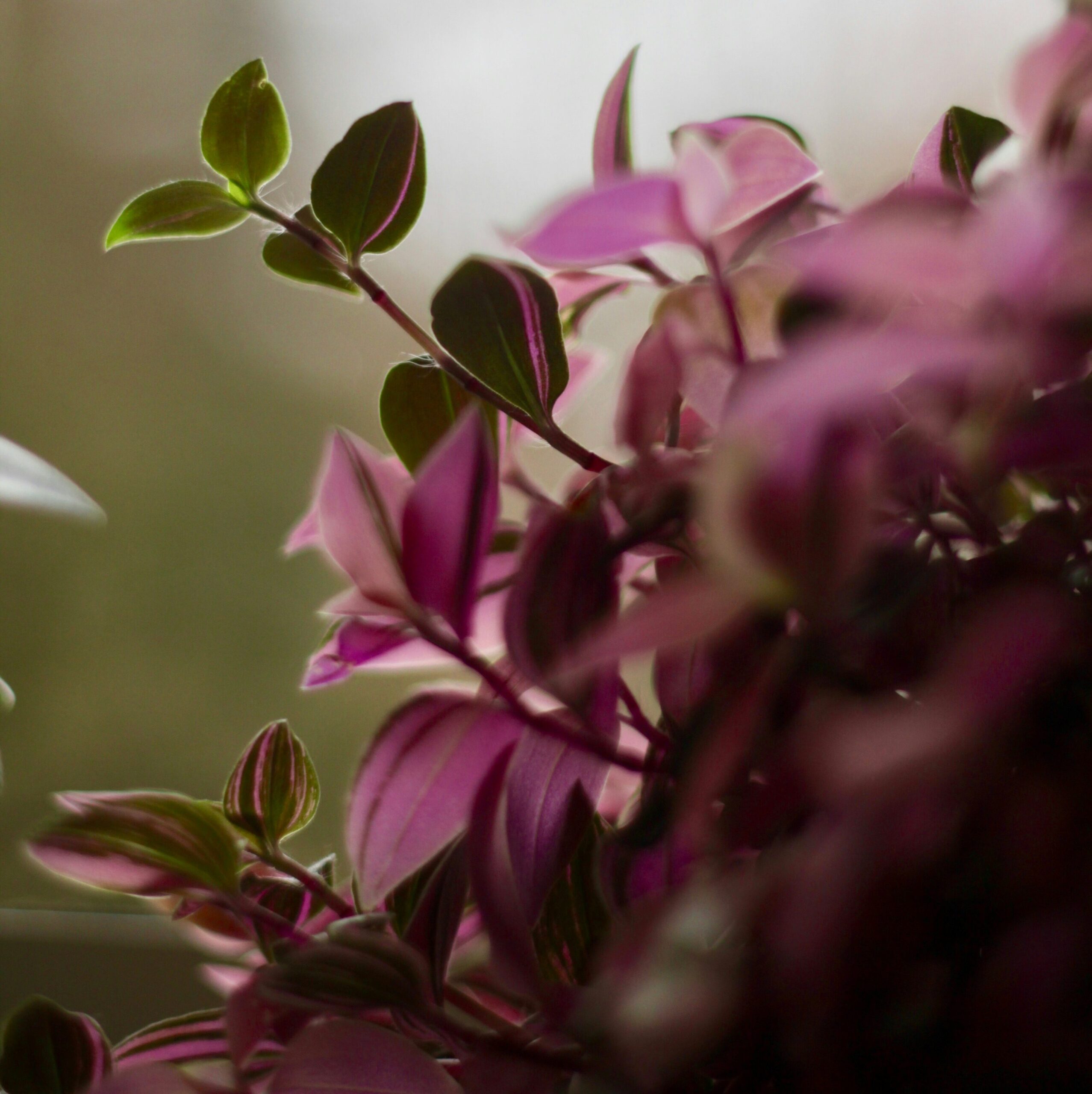
The care of this plant is fairly basic, making it a great option for those new to plant parenthood. While there are a few precautions you’ll have to take if you want to give your plant the best chance of success, I truly believe that anyone can do it.
Caring for these beauties is a rewarding experience that adds beauty and vibrancy to any indoor space. Their striking foliage and adaptability make them a favorite among plant enthusiasts. By following these care tips, addressing common issues, and adapting to seasonal changes, you can ensure that yours thrives and continues to enhance your home. Happy gardening!
So, are you convinced yet? Are you ready to add one of these trailing beauties to your home? If so, make sure to let me know how it went. I love hearing about people’s plant collections, and I always want to know if you have any tips or tricks of your own.
Well, that’s all I have for you guys this week, but I’ll be back next week with more fun ways to personalize and perfect your living space. Thanks for reading, I love you guys!
Check out some of my other posts if you’re looking for more plant-based projects.

